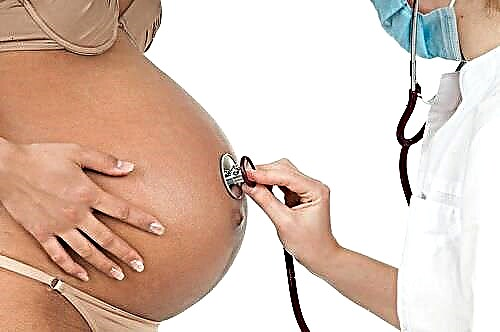
In viral diseases, drugs are in demand that have activity against viruses, as well as the ability to stimulate the immune system of a sick person so that it quickly cope with the infection. One of them is Isoprinosine. Is such a medication allowed for the treatment of children, when is it used and in what dosage is it prescribed for a particular disease?

Release form
Isoprinosine is available in only one form, which is almost white tablets that have a slight amine odor. They are distinguished by an oblong convex shape and the presence of risks on one of the sides, along which the drug can be divided into halves. One blister contains 10 tablets, and one pack can contain from 2 to 5 blisters. Isoprinosine does not have such dosage forms as suspension, powder, pills, syrup, capsules or injections.

Composition
The active ingredient of the drug is a substance called "inosine pranobex", which is also called "inosiplex" or "isoprinosine". It is a complex of several compounds, presented in one 500 mg tablet.
In addition, the medication includes wheat starch and magnesium stearate. Also inside the medicine is povidone and mannitol. Thanks to these additional ingredients, the hardness of the tablet is ensured, but occasionally they can become allergic, so it is important to consider these substances when choosing medicines for children with allergies.

Operating principle
Isoprinosine has an immunostimulating effect, which consists in the following effects:
- Restoration of the suppressed function of lymphocytes.
- Stimulation of the formation of monocytic cells.
- Activation of receptors on the T-helper membranes.
- Prevention of a decrease in lymphocyte activity during treatment with glucocorticoid hormones.
- Normalization of thymidine incorporation into lymphocytes.
- Stimulation of the activity of natural killer cells, as well as T cells with a cytotoxic effect.
- Support for the function of T cells such as helpers and suppressors.
- Increased production of immunoglobulin G.
- Activation of the formation of interleukins (types 1 and 2), as well as gamma-interferon.
- Blocking the synthesis of cytokines that increase inflammation.
- Enhanced chemotaxis of macrophages and other white blood cells.

Thanks to this effect, the drug helps to fight viral infections, affecting:
- The causative agent of measles.
- Polioviruses.
- Herpes viruses.
- Influenza pathogens.
- ECHO viruses.
- Cytomegalovirus.
- The causative agents of T-lymphoma and some others.
In addition to enhancing the immune response, the drug acts on RNA and enzymes in the cells of some pathogens, which blocks their replication. Inosine pranobex affects other viruses by increasing the production of alpha and gamma interferon, which has antiviral activity.
Indications
The reason for prescribing Isoprinosine is:
- Influenza or any other ARVI.
- Chickenpox with a severe or moderate course.
- Shingles.
- Measles, if the infection is severe.
- Herpetic keratitis.
- Herpes on the lips.
- Cytomegalovirus infection.
- Infectious mononucleosis.
- Molluscum contagiosum.
- Warts and papillomas caused by papillomaviruses.

From what age can you take?
Pediatricians prescribe medication from the age of three, however, the annotation contains a warning not to give such pills to babies weighing less than 15 kg. If the child is already 3 years old, but his weight is lower, treatment with Isoprinosine is contraindicated. For those kids over 3 years old who weigh more than 15-20 kg, the drug is allowed.
Contraindications
The medicine is not given in such cases:
- If the child has a hypersensitivity to any of its ingredients.
- If the baby's kidneys are badly impaired (chronic failure is diagnosed).
- If a small patient has arrhythmia.
- With urolithiasis or gout.

Side effects
In some patients, due to Isoprinosine, negative symptoms may occur such as:
- Itchy skin.
- Feeling nauseous.
- Pain in the upper abdomen.
- Painful sensations in the head.
- Vomiting attack.
- Feeling weak.
- Dizziness.
- Joint pain.
After taking the pills in the blood test, there may be an increase in the level of urea, as well as an increased activity of liver enzymes. Sometimes the drug provokes constipation or loose stools, insomnia or drowsiness, an increase in the volume of urine.

Instructions for use
The tablet should be given to the child after a meal, suggesting that the medicine be washed down with clean water in a small amount. If a small patient cannot yet swallow the drug whole, the tablet can be crushed in a spoon to a powder state, and then given to the child in crushed form, stirring with a small amount of still water.

Dosage
To determine the right dose in childhood, it is important to know the weight of a small patient in kilograms. It is multiplied by 50 and the daily dose of isoprinosine is obtained in mg, which is then divided into 3 or 4 doses.
You can also focus on such a ratio - half a tablet for every 5 kilograms of the child's weight. For example, a child weighs 30 kilograms, which means that he needs 50 * 30 = 1500 mg of active compound per day. These are 3 tablets of Isoprinosine, so such a patient should be given one tablet three times a day.
If a child over 12 has a severe infectious disease, then the doctor may prescribe a higher dosage of the drug per day at the rate of 100 mg of the active ingredient for each kilogram of weight. The resulting number of milligrams is divided into 4, 5 or 6 doses. For example, the body weight is 40 kg. Multiplying 40 * 100, we get 4000 mg, that is, 8 Isoprinosine tablets per day. It turns out that such a child can be given a medication 2 tablets four times a day or one and a half tablets 6 times a day.


How long to give?
- The duration of use in acute diseases, for example, in the treatment of mononucleosis, is usually 5-14 days. The tablets are given to the child until the symptoms of the disease disappear and for another two days.
- If chronic pathology with relapses is treated with Isoprinosine, the drug is prescribed in courses lasting from 5 to 10 days, and between them take a break of 8 days.
- Treatment of herpes infection is often carried out according to this scheme. - tablets are given in a therapeutic dose for 5-10 days, and then, in order to prevent relapses, they continue to be taken in an individually determined maintenance dosage for up to 30 days.
- If a child has a papillomavirus infection, Isoprinosine monotherapy is prescribed for a course of 2-4 weeks.
- In cases where the drug is prescribed for a long period, two weeks after the start of admission, it is important to do a blood test to find out the concentration of uric acid. Four weeks after the start of treatment, it is necessary to assess the performance of the kidneys and liver, and then repeat such tests every month.

Overdose
The manufacturer does not mention cases when a too high dose of tablets harmed the health of a child or an adult patient. However, if you accidentally take the drug in large quantities, it is recommended to induce vomiting and consult a doctor.

Interaction with other drugs
- The effectiveness of Isoprinosine will decrease if drugs of a group of immunosuppressants are given simultaneously with this drug.
- Co-administration with acyclovir, zidovudine or alpha-interferon drugs enhances the effect of treatment with such drugs.
- If isoprinosine is prescribed together with diuretics or xanthine oxidase inhibitors, it will increase the risk of an increase in the concentration of uric acid in the blood of a small patient.

Terms of sale
To buy a pack of Isoprinosine from a pharmacy, you first need to visit a doctor and get a prescription for this medicine. The average price of a pack with 20 tablets is 700 rubles, and for a pack containing 50 tablets, you need to pay about 1400 rubles.

Storage features
Isoprinosine should be kept at home out of the reach of children and out of direct sunlight. The recommended storage temperature of the medication is below +25 degrees Celsius. The shelf life from the date of release of the drug is 5 years and must be marked on the pack. If the marking is erased or the term has expired, it is unacceptable to give pills to a child.

Reviews
There are very different reviews about the use of Isoprinosine in children. In positive mothers they say that the medication helped to recover faster from cytomegalovirus infection, herpes conjunctivitis, ARVI and other diseases. Parents note that the general condition of the child after taking the pills quickly returned to normal, and the unpleasant symptoms of the infection soon disappeared.
However, there are also negative opinions in which they mention the ineffectiveness of the medicine for some children. Also, many mothers complain about the high cost of the drug, and the form of the medication is called very inconvenient, since it is difficult for many children to swallow a hard pill, and it crumbles in a spoon with great difficulty. In addition, some reviews indicate a deterioration in health after a course of Isoprinosine. In such patients, after treatment, acute respiratory viral infections or liver problems began more often.

The attitude of doctors to Isoprinosine is also different. Some doctors often prescribe it for influenza, mononucleosis, measles or herpes, noting a good therapeutic effect in some patients.
Others, including Dr. Komarovsky, advocate evidence-based medicine and argue that the effect of Isoprinosine has not been sufficiently studied, therefore its use is ineffective.
Positive opinions about such a drug are found mainly on the part of practitioners who prescribe medicine to patients and monitor the condition of patients. They emphasize that the pills are effective, but not always, so situations when Isoprinosine does not help are not uncommon.
The opinion of Dr. Komarovsky about immunomodulatory drugs in the following video.
Analogs
A drug from the Gedeon Richter company called Groprinosin can replace the drug. This medication also contains inosine pranobex in each 500 mg tablet. It, like Isoprinosine, is allowed to be given to children over three years old, provided that the child's weight is more than 15 kilograms. Contraindications, recommended doses, possible side effects and indications for these drugs are the same. The price of these funds is also about the same.
Also, as a substitute for Isoprinosine, a specialist may recommend drugs with a different composition, but with a similar effect on the body of a sick child.
This could be:
- Amizonchik syrup. This antiviral drug is effective for influenza and other acute respiratory viral infections. It is prescribed for children aged 3 years and older.
- Kagocel tablets. They are recommended for children over 3 years of age with ARVI, influenza and other viral diseases, as well as for their prevention.
- Orvirem syrup. This medication containing rimantadine is used for influenza and acute respiratory viral infections in children over a year old.
- Ingavirin capsules. Such a medicine in a children's dosage is allowed for children over 7 years old. It is prescribed for infection with the influenza virus, RS virus, adenovirus and other pathogens.
- Acyclovir tablets. This drug is effective against herpes viruses, so it is often used when infected with one of the pathogens of this type, for example, with severe chickenpox or herpes on the lips. The medication is also available in the form of an ointment, cream, eye ointment and powder for injection. It is used in children of any age.
- Suspension Arbidol. Umifenovir in the composition of this drug affects coronaviruses and influenza viruses. The medication is allowed from the age of two, but it is also available in solid form (capsules, tablets), which is prescribed for children over 3 years old.
- Amiksin tablets. The action of this drug is provided by tilorone, due to which the drug stimulates the immune response to infection by viruses. The medication is prescribed from the age of 7.

In addition, quite often children with viral diseases are prescribed interferon preparations (Genferon Light, Viferon, Grippferon), however, it is up to the doctor to determine which medicine is best for a particular pathology. It is not recommended to give these drugs to babies on their own.



